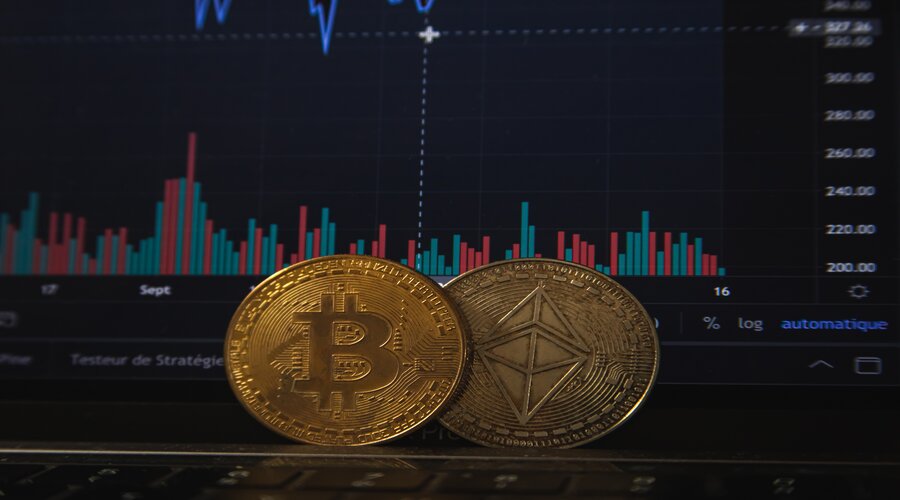
Three Critical Events Linked To Crypto Price To Keep An Eye On In Light Of The FTX And Alameda Debacle
Bitcoin had been exhibiting record-low fluctuation until the beginning of this week, giving altcoin enough leeway to paint some nice technical setups.
At the same time, on-chain data and technical analysis began to suggest that BTC was nearing a bottom, and many analysts believed that better days were ahead.
Fast forward to the present, and the market’s volatility spike turned out to be a black swan event.
As you are aware, FTX is no longer operational. Alameda Research is the same.
BlockFi has halted withdrawals, citing an inability to “operate as usual,” and is “pausing client withdrawals as permitted by our Terms,” implying that the company is also dormant.
The virus is spreading, and the shrapnel from this Krakatoa-level event will undoubtedly reverberate throughout the entire crypto ecosystem.
It is difficult to make a confident short-term investment thesis for assets simply by looking at the chart at this time, and the best thing unsure investors can do is either stick to a time-tested plan or do nothing.
The most likely short-term outcome is that volatility will remain high and cryptocurrency prices will continue to oscillate for some time.
Nobody wants to think about the potential negative outcomes for the crypto sector and cryptocurrency prices that lie ahead, but it is every investor’s responsibility to consider the absolute worst-case scenario and have a contingency plan in place.
Here are a few things to watch in the coming days.
USDT/USD in comparison to USDC/USD
Stablecoins occasionally lose their peg to the dollar during high-volatility events. When there is widespread fear that Bitcoin will be banned, hacked, or die, the price of stablecoins can rise above $1.00 as traders seek refuge in assets pegged to the US dollar.
Tether USDT occasionally loses its dollar peg during crypto black swan events. It’s happened before, and once the smoke clears, it usually returns to the 1:1 peg.
According to TradingView and Coinbase data, USDT/USD fell below its dollar peg on November 9, dipping as low as $0.97 at one point. While USDT fell below its peg, the USD Coin’s USDC value increased to $1.01.
While we won’t go into the unconfirmed reasons for the split, unsubstantiated rumours about Tether and Alameda Research can be easily found on Twitter.
What’s important to remember here is that false information, rumours, and lies can easily cause panic, so it doesn’t matter if the rumours about Alameda/Tether are completely false.
If it spreads on social media and frightens investors, they will act, and many wills or are in the process of converting their USDT to USDC, BTC, or other stablecoins.
During the Terra and Celsius implosions, similar behaviour was observed. According to TradingView and KuCoin data, the price of USDC increased from $1.00 to $1.06-$1.19 on May 12. On the same day, the USDT briefly fell to $0.98 and $0.94.
When the price is dislocated and there are spreads between exchanges, stablecoin conversions become expensive, and the experience of swapping from one to the other or from an altcoin to a stablecoin can be unpleasant.
The dollar peg between the USDT and USDC is something to keep an eye on.
Also Read,
Customers Of FTX Try To Withdraw Funds In The Bahamas In Unconventional Ways,
Bitcoin price expectations
The sell-off on November 8 finally pushed BTC’s price out of the 146-day range where it fluctuated between $24,500 and $18,600.
This is a significant range break, and failure to recapture this range and increased selling could cause the price to slice through the volume profile gap and find support in the $11,000-$12,000 range.
Yes, it’s unpleasant, but that’s the current reality.
If Bitcoin can reclaim and hold the $18,000 handle, the price will be back in its previous range, which is a good sign.
A similar scenario exists for Ether, where the price fell out of a 148-day range between $2,000 and $1,250, but has since reclaimed the previous range.
Bearish traders have a target price of $700, but it’s interesting to see how the price has recovered to trade around $1,250.
The market is looking for more stability.
Many crypto-focused companies and investment groups have exposure to FTX and Alameda research, which means they now have some gaps in their balance sheets.
Companies with #FTX exposure
-Sequoia Capital – $213.5 million exposure
-Galaxy Digital – $77 million exposure
-Crypto.com – Less than $10 million
-Amber Group – 10% funds
-Kraken – exposure to 9000 FTT
-Multicoin Capital – 10% funds
-Selini Capital – 3% of their funds
A few of these crypto-native businesses also have large bags of various altcoin and decentralized finance (Defi) tokens. To recover current losses, make good on their loans, and meet their client obligations, it’s possible that some of these BTC, altcoin and Defi token hoards will be marked sold on spot exchanges.
Altcoins are already down significantly, and some are relatively illiquid, implying that a significant increase in selling could put significant downward pressure on price.
Before investing in what appear to be once-in-a-lifetime dips and cycle bottoms, investors should dig deeper and look at who the majority holders of the token/project are, and keep in mind that FTX’s multibillion-dollar implosion has yet to be fully felt throughout the market.
Before investing in any cryptocurrency, now is the time to conduct research and due diligence.
Also Read,






